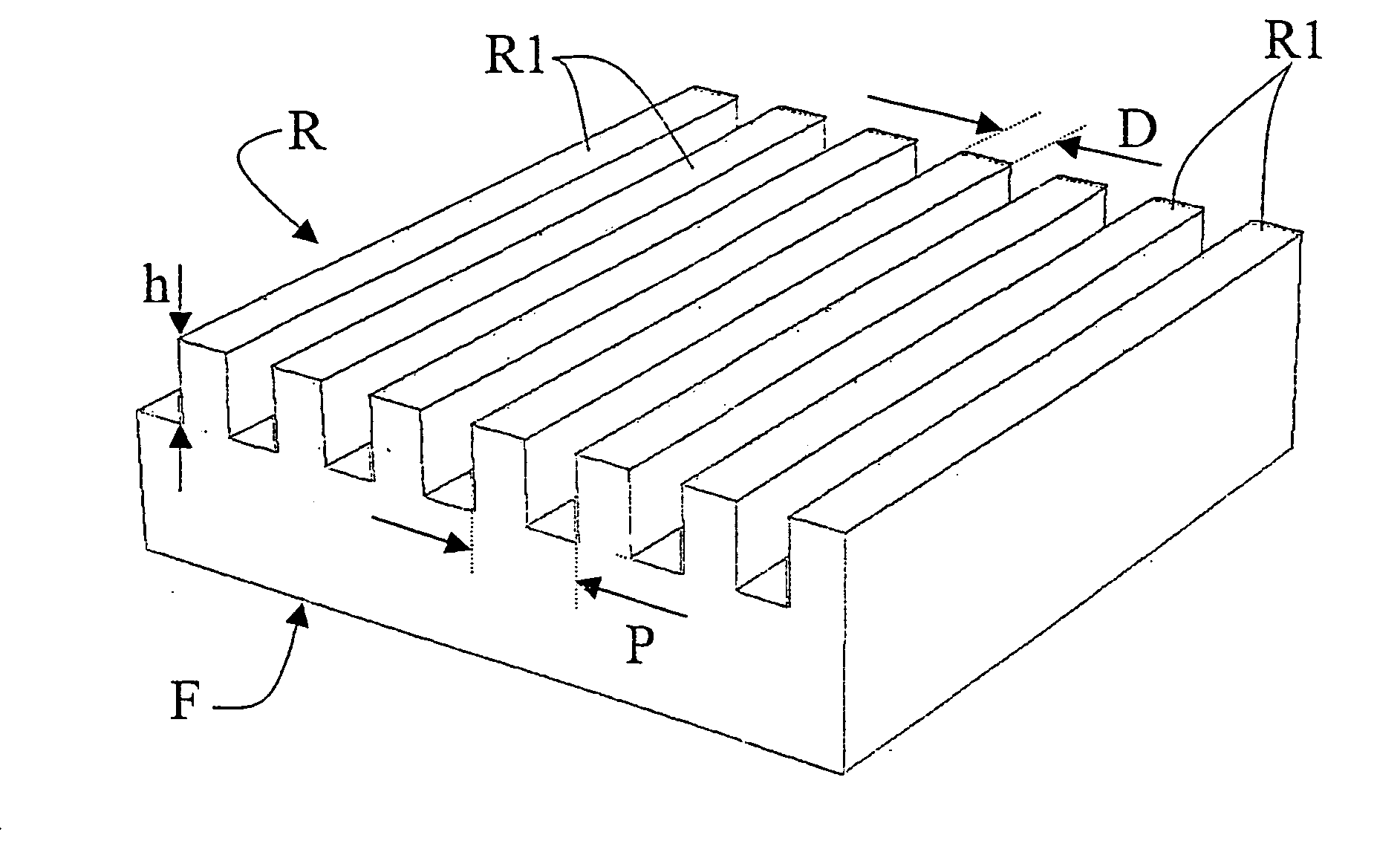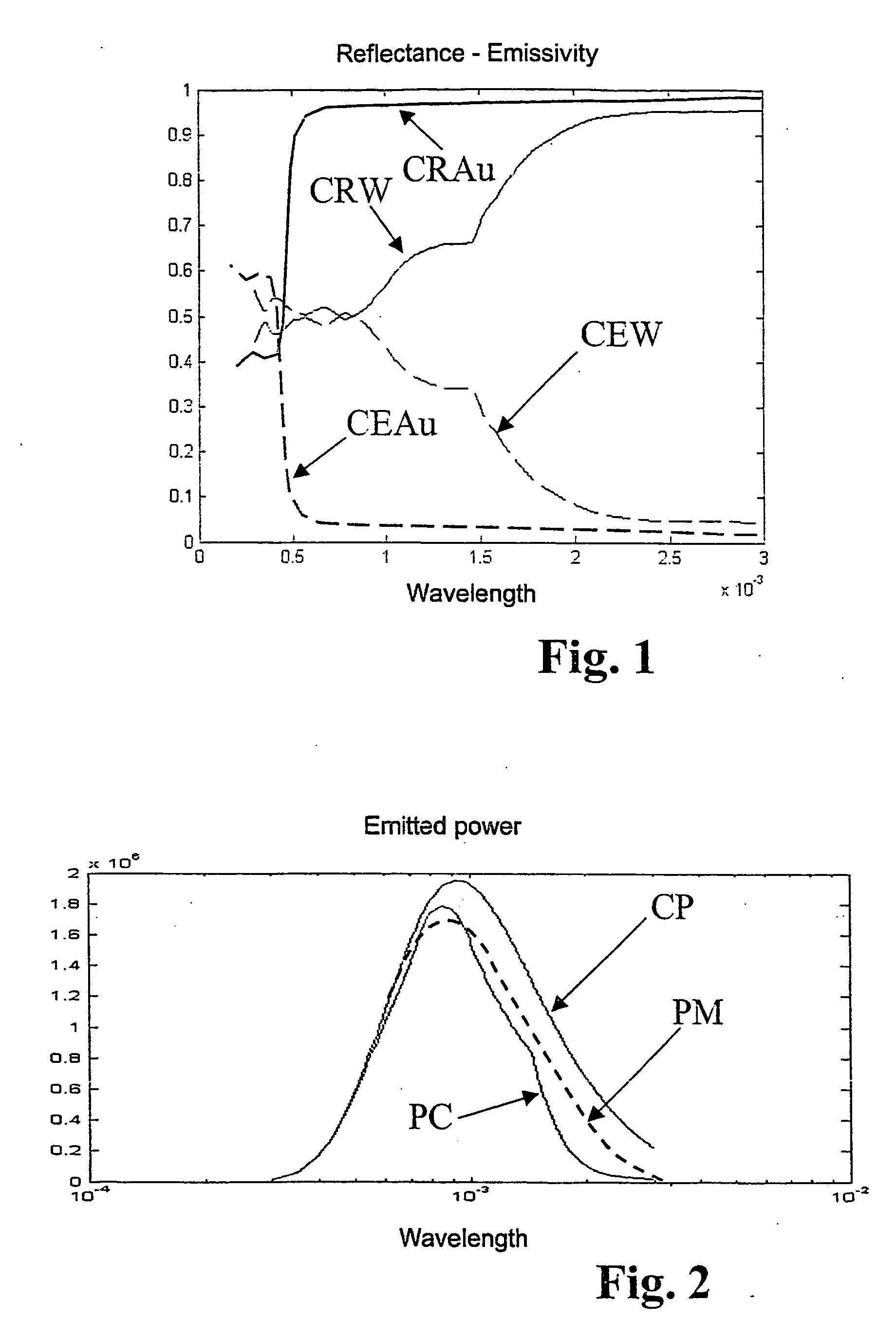High efficiency emitter for incandescent light sources
a technology of emitter and incandescent light source, which is applied in the direction of discharge tube/lamp details, non-electron-emitting electrode materials, lamp incadescent bodies, etc., can solve the problems of limited efficiency of traditional incandescent lamps, achieve selective absorption, enhance the luminous efficiency of the emitter, and minimise the angular sensitivity of the grating
- Summary
- Abstract
- Description
- Claims
- Application Information
AI Technical Summary
Benefits of technology
Problems solved by technology
Method used
Image
Examples
Embodiment Construction
[0045] As previously explained, according to the main aspect of the present invention, the increase in efficiency of visible emission is obtained by means of an appropriate micro-structuring of the surface of the incandescence emitter; said micro-structuring is operative to reduce the reflectance ρ in the visible region of the spectrum, reducing the reflectance ρ in the near infrared region to a lesser extent, in order to increase emission efficiency in the visible region.
[0046] The desired anti-reflection behaviour can be obtained both with a one-dimensional grating, i.e. with periodic projections along a single direction on the surface of the filament, both with a two-dimensional diffraction grating, i.e. with periodic projections along two orthogonal directions, not being necessarily parallel to each other, on the surface of the filament. For this purpose, in FIG. 3 the reference F designates a portion of an emitter according to the invention, which superficially has a diffracti...
PUM
 Login to View More
Login to View More Abstract
Description
Claims
Application Information
 Login to View More
Login to View More - R&D
- Intellectual Property
- Life Sciences
- Materials
- Tech Scout
- Unparalleled Data Quality
- Higher Quality Content
- 60% Fewer Hallucinations
Browse by: Latest US Patents, China's latest patents, Technical Efficacy Thesaurus, Application Domain, Technology Topic, Popular Technical Reports.
© 2025 PatSnap. All rights reserved.Legal|Privacy policy|Modern Slavery Act Transparency Statement|Sitemap|About US| Contact US: help@patsnap.com



